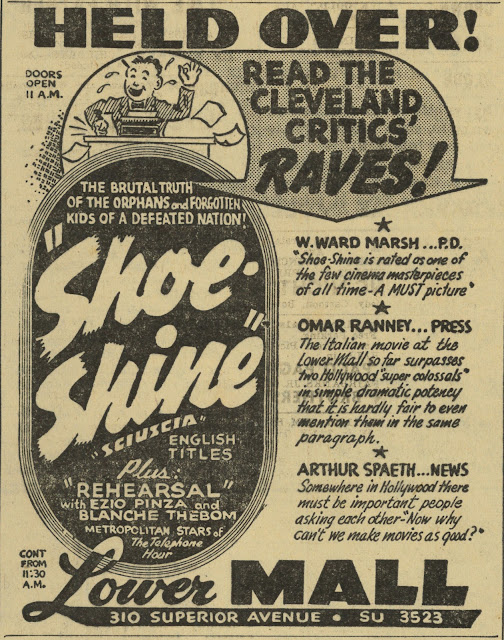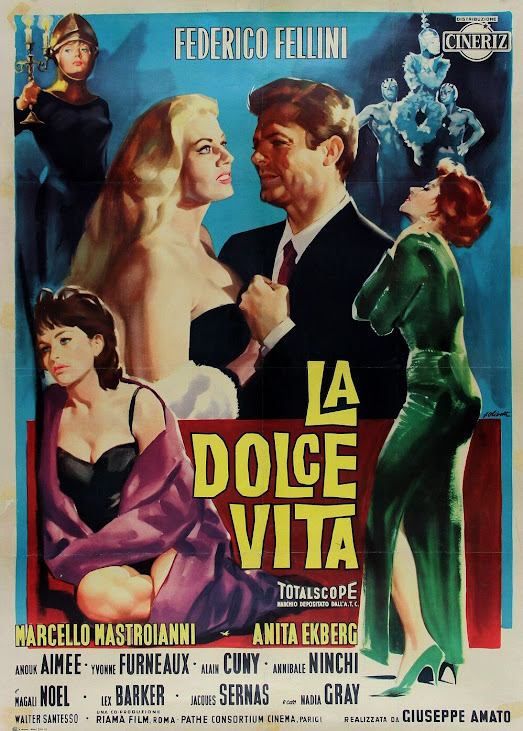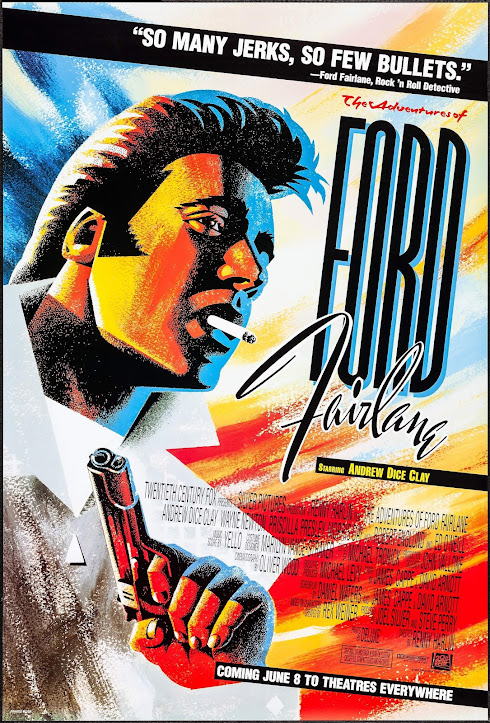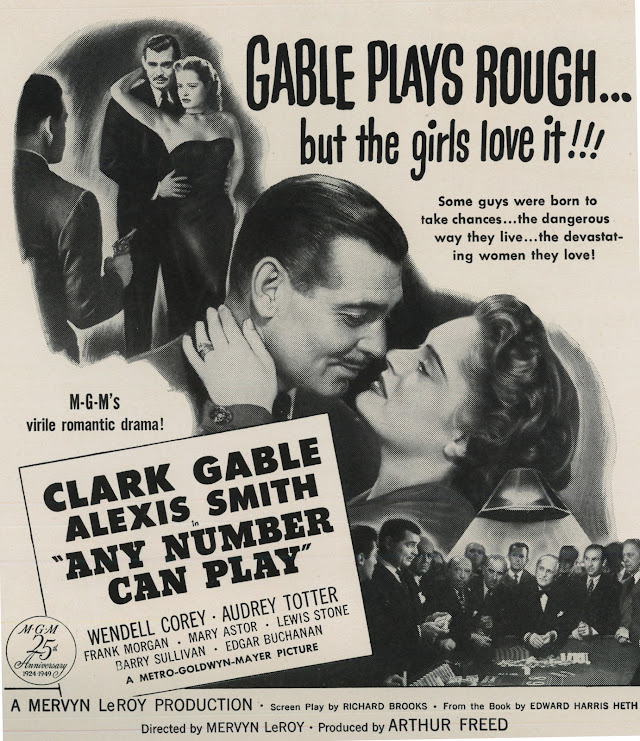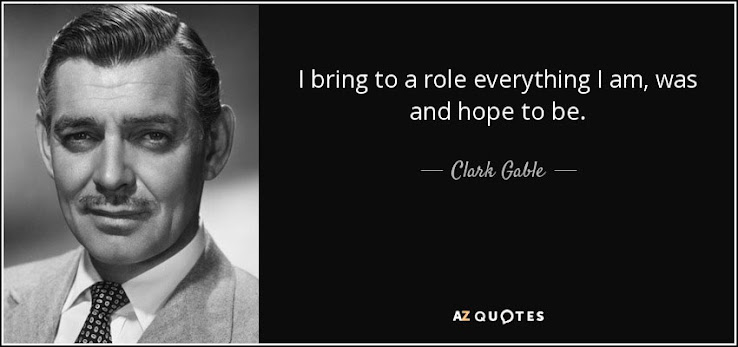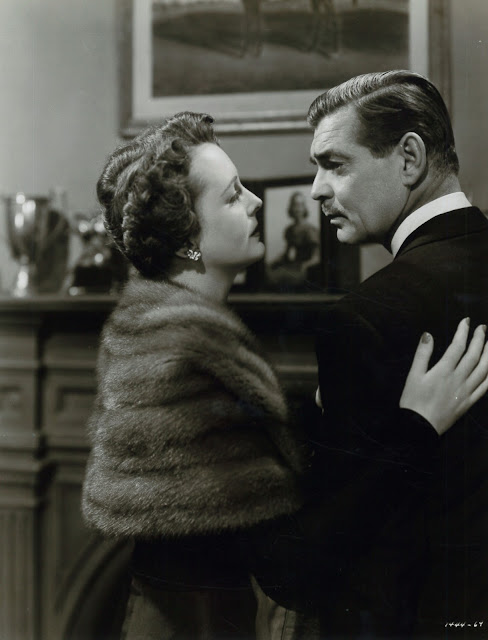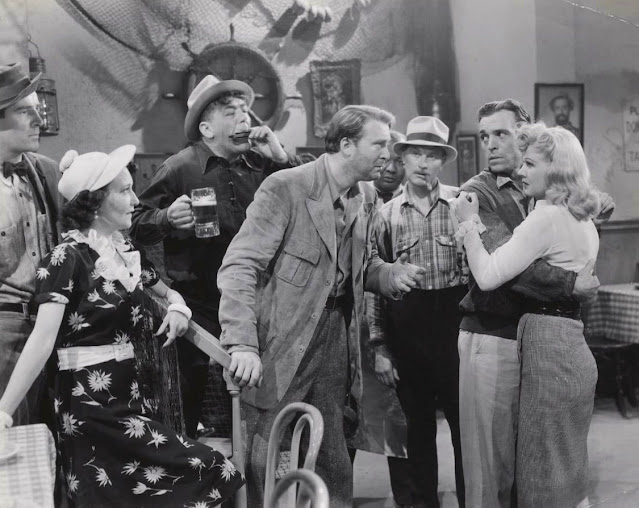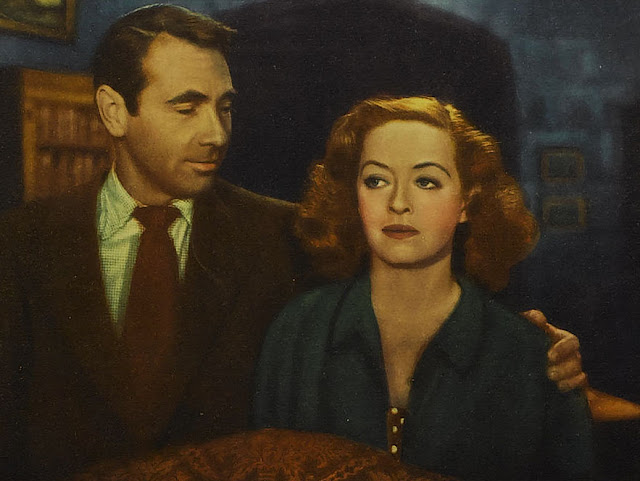Must They All Be Understood?
Around The World in Several Sittings
Again by way of exploring offshore offerings and how we greeted those that edged way to a crowded US marketplace, here's follow-up to “Take Your Titles or Dubbing Pick …,” GPS meditation on The Blue Angel and M as received outside country of origin (Germany). Thanks to a tip from Greenbriar reader Neely O’Hara circa 7/5/2021, I saw this week La Otra at You Tube, a Mexican-made melodrama starring Dolores Del Rio in a dual role as identical sisters, Dead Ringer two decades early, remade with Bette Davis the twins, one killing other for profit and to satisfy long-stand resentment. YT’s upload of La Otra was archive-restored, excellent in all ways, Spanish-spoken throughout with no English subtitles. I watched per Neely’s assure that knowing Dead Ringer would make La Otra easy to follow, which it did. As before, I wanted to test tolerance for viewing, and listening, sans familiar language. Can it be accepted, let alone enjoyed? I vote yes re La Otra, Del Rio the comfort zone among an otherwise unfamiliar cast. She gives a great “silent” performance inasmuch as all emotion is conveyed visually with little need of words, Del Rio an accomplished performer before movies even had sound. Hers is melodrama shorthand, a most universal of performing language. The actress for her range of expression was my gateway to enjoyment of a familiar story told on differing cultural terms. La Otra is modern-set, “Felis Navidad” a frequent greeting throughout, so we know early when it takes place, plus there are department stores and restaurants holiday bedecked, neat insight to mid-40's Christmas and how it was celebrated in Mexico.
La Otra was Mexico’s equivalent of highly polished Hollywood output, and frankly good as any of them. It should have had a US release, but to my knowledge did not, other than perhaps Spanish-speaking venues. Story is understood better as narrative progresses, everyone speaking native language that I could grasp better than expected from non-English throughout, like being at a gathering where you realize a foreign language is not so foreign as you figured. I took Spanish in school and recall but one word: "paraguas" for umbrella, so imagine how pleasing it was to listen to and at least partway comprehend La Otra. One instance: Del Rio the poor sister makes her situation clear by longing looks at a neon-bright “loteria” sign facing her from everywhere (yes, lottery --- nothing gets past me!), plus she’s a salon/spa drudge preyed upon by lechers wanting more for their money than a manicure. No need for dialogue to divine that. Her sister living high and haughty makes the murder foregone within a first act, chillingly executed while kids outside do a Yule march with pinatas. I doubt I’ll be satisfied with Bette Davis rendition from here on, having seen Del Rio play it so capably. If La Otra did city shots on a backlot, it was one heck of a backlot, my guess being these were real streets and stores crowded to a hilt, location stuff vivid as we could ask from a show to beat Hollywood at its own heated up game.
Not to dwell unduly on Mexican titles, but there are horrors emerging from there largely unseen since most were new, one of them, The Phantom of the Monastery, lately released on Blu-Ray by Indicator, available also on You Tube under its original title, El Fantasma del Convento. I watched and was duly impressed, Fantasma/Phantom made in 1934, its visual elements to remind us of US and Euro chillers done prior, in many ways their equal, a rediscovered gem. There are English subtitles with both renditions. VCI also carries a number of Mexican chillers, but I’ve checked none out. Judging by Fantasma/Phantom, it may be time I did. One can go a lifetime ducking other-culture offerings for assumptions made early on. Famous Monsters magazine soured me on Latin chills, which to judge by stills printed there, looked anything but inviting. What did I want with Aztec mummies and vampires that part-time wrestled? Clincher was going to the Liberty in 1965 for a combo of Face of the Screaming Werewolf with Curse of the Stone Hand, both imports, dubbed grievously, redeemed only by Lon Chaney in one, John Carradine in the other (sources say Stone Hand was done in Chile). Upshot is I was ruined for below-border horrors from that day. Fifty-seven years is long wait for a closed mind to peep open, but thanks to Fantasma/Phantom, and others possibly as good, there is clearly much to mine from this untapped category.
So it has taken time, but I’ve made peace with foreign language and subtitles, for reasons not expected but rewarding. First is seldom getting what we are programmed to expect. Three act structure with all too familiar bumps are not rules observed by most foreign films. It was that non-adherence to US film policy from 1920 onward that made post-WWII features out of Europe so striking. People were tired of movies seen or heard with eyes or ears shut. This was why it wouldn’t matter when TV eventually cut features by as much as half for time slots at premium. Viewers numbed to narrative formula could decode a story already half over before sitting down to watch. Ann and I saw a thing recently where apparent finish saw everyone happy, issues evidently resolved. She was ready to switch for a next show when I warned that no, it wasn’t over, there was still a third act crisis to dispense with. The best American films disguised such rigid construction, but for most, it was transparent as tissue, and as disposable. With foreign stuff, we seldom know what they’ll do next, or if it will satisfy, but at least they won’t go paths so trod as most of domestic storytelling.
Thing is, Euros don’t necessarily care if we are satisfied. Maybe it is a cultural thing, but I’ve not observed cross-pond crowds clamoring for cheery endings, let alone to tie tales with pink ribbon. They never were so enslaved by Classical Narrative Homebrew. What then where the story itself is superfluous, as it often is with imports? There’s your fascination for many. When I went to Greensboro’s fabled Janus Theatre during the seventies, there was quietude in auditoria to make a dropped pin heard. These people were either fully immersed or catatonic. Art was art … they had not come to crunch corn and make of moviegoing a superficial experience. I thought I was alone in a tomb amidst still audience for Last Tango in Paris, yet more reason to rebel toward Euro that smacked of seriousness and demanded my fealty. Art films had a long-established congregation by this time. Approximately 600 out of 15,000 operational theatres in the United States were using imports by 1955, a number to increase when the French New Wave began sending over goods in 1958. Add to these the sensation that was And God Created Woman, which played art houses in a subtitled version, then widened to mainstream theatres with dubbed prints, four million in US rentals the best any Euro had earned to that time. There was sex for explanation, a same engine that drove offshore arties since postwar discovery of them. Genius showman and distributor of Euros Arthur Mayer said frankly that sex was what it was all about, anyone pretending otherwise just kidding themselves.
Greater license offshore product enjoyed was back of art success, but there was also prestige to be earned just for attending them, then pretending to grasp their point. Richard Schickel wrote longingly of college days he spent camped under marquees for a latest Euro dose: “Going to these movies was, in some sense, morally bracing, a complex pleasure rather than a simple one like seeing American films. Struggling to comprehend exotic cultures, coming to grips --- earnestly, soberly, talkatively --- with new ways of seeing and with new filmic rhythms, set us apart, gave us a sense of being an elite.” This may sum up an entire art audience’s basis for going, for it was challenge they wanted, plus reward in feeling superior to commonplace American movies and commonality that attended them. Schickel’s “struggling to comprehend” struck familiar note for me, though rather than seek that, I more-less rejected whole of arties, a stand endorsed by old-line Hollywood directors who heaped ridicule on upstart auteurs (Billy Wilder a most vocal and lacerating). I’d chew off ropes that would tie me down to an Ingmar Bergman, being provincial to point that nothing but native language would do. Closest I got to foreign in selecting campus movies was Black Sabbath.
 |
| Art as Above in Asheville, NC --- and Fayetteville, NC at Below Left |
What soothed, but recently I admit, was at long last relax and letting art films, however remote and impenetrable, wash over me like oncoming sleep, Zen state assured by images I’ll permit to be obscure, language free to drift toward or away from comprehension or caring. Where subtitles tire, merely toggle off until you’re ready to confront them again, an option discs happily offer. What I see may be arresting enough to compensate for what I hear but cannot understand. Again, it calls for perception as acquired from silent cinema where faces tell whole of stories. What was needed, at least for me, was set aside of necessity that everything be clear as bells. Life grants no such gift, so why should movies? We swim daily in ambiguity, spoiled for being spoon-fed to where nothing less will do. American films admittedly got more foreign as New Waves spread influence, even if observers at the time said Euro accounted for paltry 7.5% of US boxoffice revenue (Peter Lev, The Euro-American Cinema). The public may not have watched in mass numbers, but domestic filmmakers paid heed. I remember noting loopy style of shows I saw for reasons other than potential art --- Bonnie and Clyde, Point Blank --- there were others, the more so as art was absorbed by a US mainstream. Hollywood had done it before, as note a late silent era co-opting what had been Euro-achieved, Germany pillaged perhaps the most. Would we even have had our glorious 30’s horror cycle without them?
Came the French in the fifties to be influenced by our old movies, which they held no brief against, for it was uniformity of their own country's cinema that became objects of protest. The New Wave was watched and admired on both sides of the Atlantic, even if ours remained a fringe audience, but here’s my query: Is New Wave still watched and admired? I notice Breathless at TCM from time to time. Did we have to be there in 1960, like Richard Schickel, to fully appreciate such films now? How many watch Breathless for curiosity and little else? English critic David Shipman said art films had “dated,” it being years ago that he said it. Even the guy who loosed so many of them on us, Jean-Luc Godard, admitted the concept of auteurism was “absurd,” that he and self-promoting pals cooked up the whole business to call attention to themselves. Could be Godard was just in a sour mood that day, as he was known to often be, but for wide influence they had, these boys surely did something right. Breathless when new looked like a puzzle with pieces out but fits comfortably now beside much of what US directors have done for several generations (lest we forget Breathless is over sixty years old). I drift less to as-defined “art” films than frisky genre fun the French and Italians did by cartloads. Sometimes too I’ll need home-cooked break from overkill of Euro stories told obscurely, one of late L’Eclisse (1962), by Michelangelo Antonioni. I didn’t fully get it, but never expected to, OK cause I at least saw confusion coming. There is much to like still, a French tour if nothing else without having to go there, plus glimpse of differences minus task of flight or boating across the Atlantic.
Following brace of foreigns, I seek tranquility that is generic US plotting by number. My antidote after L’Eclisse and handful of others was a 1949 George Raft called Red Light, where he tracks the killer of his priest brother. I had seen it before, but this time, relief of Raft was profound, emotion roused by Red Light surprising me, but given the circumstance, should not have. Never sell narrative continuity short, this one worth repeated sit just for bracing moment when GR, told he should put his brother’s death behind him, says with intense close-up, He was all I had to love! That line threw me a jolt not to be got from foreign language exposure, at least not so far, but maybe I still haven’t seen enough of them. Fact is most register cold for me, in spite of much to otherwise appreciate, the more so when they lighten up as with much that Kino has out with my French faves, Jean Gabin, Alain Delon, and Jean-Paul Belmondo. You may safely buy blind from this crew, as I haven’t seen a cluck with any of them yet. They may have made reputations with art films, but having to eat like all of us, did crime, cop, and sometimes far-out genre spoofing to make me a latter-day fan of the triage. A best director of them by the way is Euro-genre master Jean-Pierre Melville, so shop him too with confidence.
Looked at Belmondo in Le Marginal (1983), him as police detective versus kingpin Henry Silva, car-boat-etc. chases all over Paris maps. Then was Le Magnifique (1973), further adventuring along That Man in Rio line where Belmondo is teamed with Jacqueline Bisset for secret agent foolery. These must have had some sort of US release, though I never noticed either before Kino offered Blu-Rays of both. Same with tired cop or in-twilight crime boss that Jean Gabin invariably played in maturity. He has such authority as to not need to be understood, and like with Belmondo, and Delon for that matter, there are so many features to discover and enjoy, virtually all courtesy Kino, though good ones are also had from Criterion. I’m starting to think the best genre films overall for the last fifty years came from France, Italy, the UK, Far East and elsewhere other than us (remember those John Woo shootouts that had such a vogue?). Again, it’s getting used to subtitles, admittedly a hump, but then young people manage it admirably with Anime, Bollywood, other categories I’ll not discuss for having no familiarity with them. Too late I’ve come to these parties, but nice to think others embrace them.
But I was raised on foreign films. Fully a third of what I saw at the Liberty was British or elsewhere. Take away Hammer, peplums, Mario Bava, 007, Beatles movies, Spaghetti and German westerns (Old Shatterhand), Godzilla, co-produced weirdies like Psycho-Circus or Castle of Blood, and I would have been like peers playing kickball or hunting tadpoles. My go at Cockney accent at age eleven was as credible as Michael Ripper’s. Bet I saw more from offshore than Schickel and his mates, enjoying them better in the bargain. Threat to integrity of imports was Yank companies horning in with finance backing and distribution muscle. That’s how Blow-Up happened, MGM behind Antonioni vision with dollars he never dreamt of before. 1966-67 saw it sold as a dirty movie, what with nudity and sex frolic Metro left in despite PCA warning, Blow-Up further incidence of censorship’s cookie crumbling. I missed it then because the Liberty never played it, though ads out of Charlotte and a Piedmont triad promised the moon. Blow-Up sounded not unlike Hitchcock, sort of an outdoor Rear Window, and I wondered what audiences expecting that thought of what Antonioni gave them instead.
Such US-Euro handshakes could and did make money … look at La Dolce Vita, and Blow-Up took fantastic returns in a year where virtually all of MGM went into red, six million in domestic rentals, $3.7 million foreign (for territories where Metro distributed), eventual profit to Metro $3.6 million. Blow-Up was among last of high rides for foreign art, as poof went the PCA amidst dawn of a ratings system where anything went, leaving fewer rules for imports to violate. It needed redder meat to get Yank notice, Last Tango in Paris more explicit in 1972 than we’d dare, and rewarded handsome for the deed. Television was reluctant to walk plank that was subtitles but would chance foreign and art that was dubbed. Networks stayed shy, but our Channel 12 out of Winston-Salem ran La Dolce Vita, then The Pawnbroker, latter a homegrown art movie, for memorable primetime nights. We wondered if nudity would stay, watching entirety the price of finding out, beyond me at restless age. Ponder now --- Have old US classics become art, that is, objects watched out of duty if at all? When was the last time anyone took Citizen Kane or Vertigo for entertainment? I’ve not seen either with subtitles, but increasingly suspect subtitles might belong. Do these and other of our icons play more foreign than American now?







